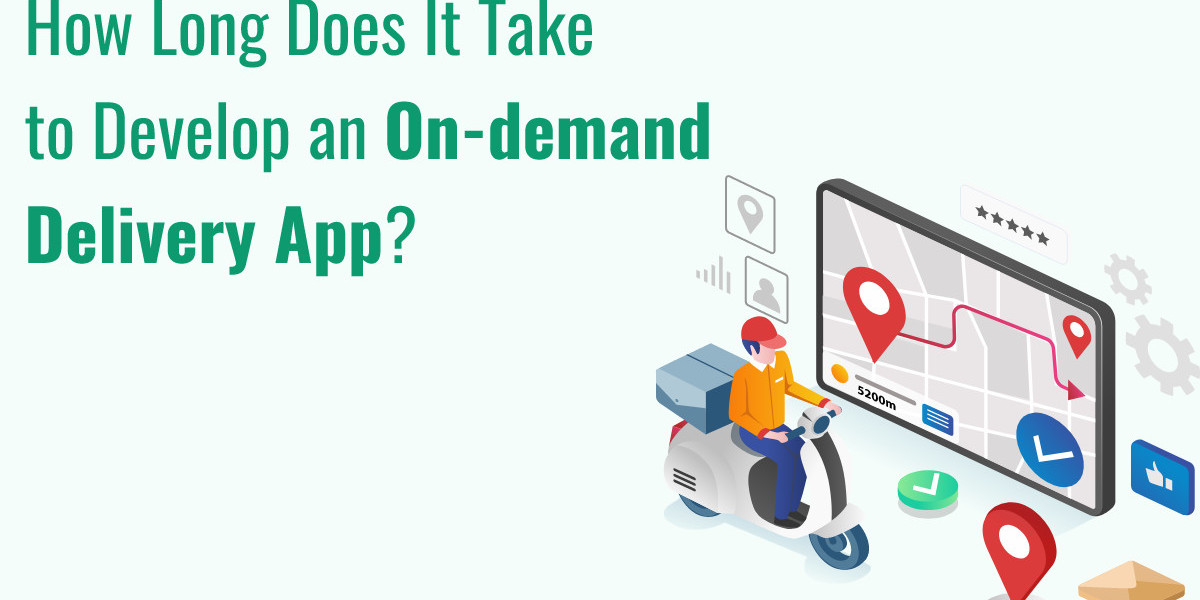In the fast-paced world of app development, creating an on-demand delivery app requires meticulous planning, execution, and testing. The timeline for developing such an app can vary significantly based on various factors, including the complexity of features, platform preferences, team size, and the development approach chosen. Let's delve into the details of what influences the time it takes to bring an on-demand delivery app from concept to reality.
Factors Influencing Development Time
Several key factors impact the timeline for developing an on-demand delivery app:
Feature Complexity: The number and complexity of features desired in the app significantly affect development time. Basic apps with essential features like user registration, order placement, and basic payment processing may take less time compared to apps with advanced features such as real-time tracking, chat functionality, and sophisticated algorithms for route optimization.
Platform Selection: Developing apps for multiple platforms (iOS, Android, web) requires additional time compared to focusing on a single platform. Cross-platform frameworks like React Native or Flutter can reduce development time by allowing code sharing across platforms, but optimization and testing across different operating systems still add to the overall timeline.
Design Requirements: A well-designed user interface (UI) and user experience (UX) are crucial for app success. Designing intuitive interfaces and ensuring seamless navigation can be time-consuming, especially when incorporating feedback from user testing and iterations to refine the design.
Backend Development: Setting up a robust backend infrastructure involves developing APIs, integrating databases, ensuring data security, and implementing server-side logic. The complexity of these backend components and the need for scalability can extend the development timeline.
Integration of Third-party Services: Incorporating functionalities such as payment gateways, mapping services (like Google Maps or Mapbox), push notification services, and analytics tools requires integrating with third-party APIs. The time to implement and test these integrations adds to the overall development schedule.
Testing and Quality Assurance: Thorough testing is essential to identify and fix bugs, ensure app functionality across different devices and platforms, and verify security measures. Testing phases may include unit testing, integration testing, and user acceptance testing (UAT), all of which contribute to the total development time.
Typical Development Timeline
While the exact timeline can vary, a rough estimate for developing a basic on-demand delivery app with essential features is around 3 to 6 months. Here’s a breakdown of the stages involved:
Planning and Requirement Gathering (1-2 weeks): Define the app's objectives, target audience, features, and technical specifications.
UI/UX Design (4-6 weeks): Create wireframes, design UI elements, and develop a prototype. Iterate based on user feedback to refine the design.
Backend Development (6-10 weeks): Set up server architecture, develop APIs, integrate databases, and implement server-side logic.
Frontend Development (6-8 weeks): Develop the app interface, implement navigation and user interactions, and integrate with backend services.
Testing and QA (4-6 weeks): Conduct comprehensive testing to ensure functionality, performance, security, and compatibility across platforms.
Deployment and Launch (1-2 weeks): Prepare for app store submissions, finalize marketing strategies, and launch the app.
Conclusion
Developing an on-demand delivery app requires careful consideration of various factors that influence the development timeline. From defining features and designing intuitive interfaces to developing robust backend infrastructure and conducting rigorous testing, each stage contributes to the overall duration of the project. While a basic app may take several months to develop, more complex apps with advanced features and multiple platform support can extend the timeline significantly. By prioritizing thorough planning, efficient development processes, and effective project management, developers can streamline the timeline and deliver a high-quality on-demand delivery app that meets user expectations and stands out in a competitive market.







